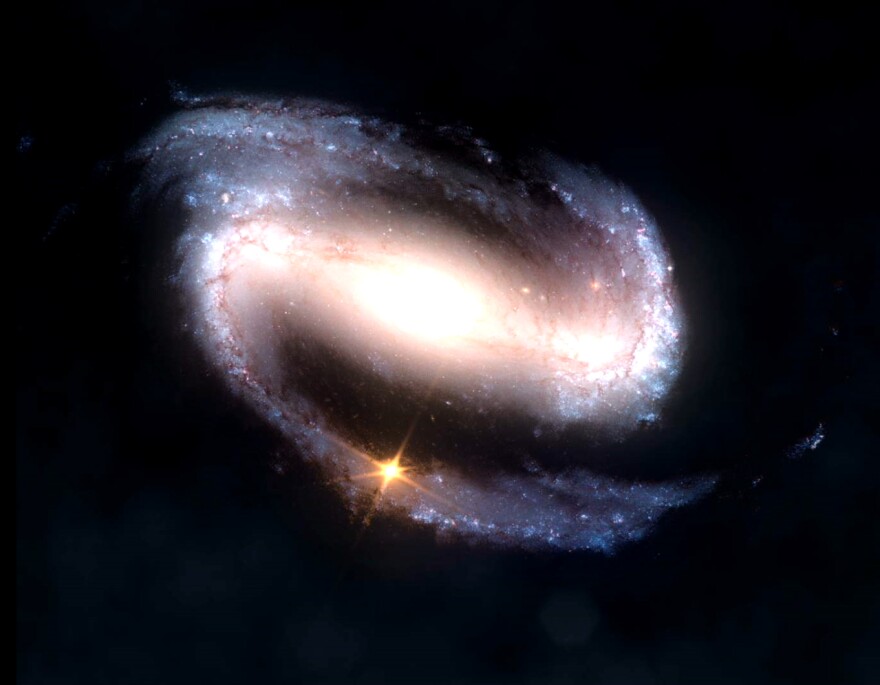Have the natural laws that govern the cosmos ever changed?
Dr. Jeremy Mould, professor of astrophysics and supercomputers at the Swinburne University of Technology, observes that gravity has remained unchanged for billions of years.
Jeremy Mould is a graduate of the University of Melbourne and of the Australian National University. He is a professor at Swinburne University of Technology’s Centre for Astrophysics & Supercomputing and a professorial fellow at the University of Melbourne. Jeremy was Director of the National Optical Astronomy Observatory (NOAO) 2001-7. NOAO is the National Science Foundation’s facility for ground-based astronomical research at optical and infrared wavelengths. Preceding appointments were Professor of Astronomy at the Australian National University, Director of the ANU's Research School of Astronomy & Astrophysics, and Professor of Astronomy at the California Institute of Technology's Palomar Observatory. His career has mostly been in optical/infrared observatories. Jeremy has also worked at the Royal Greenwich Observatory, Kitt Peak National Observatory, and Mount Wilson & Las Campanas Observatories. He has worked on numerous teams, advisory and planning committees for NASA. At Caltech he served three years as Executive Officer for Astronomy and then joined the Science Steering Committee for the W.M. Keck Telescope, now the world's largest optical telescope. He was chairman of the Anglo-Australian Telescope Board 1999/2000, and a Fellow of the Australian Academy of Science from 1998. Awarded the American Astronomical Society's Newton Lacey Pierce prize in 1982 jointly with his late colleague Marc Aaronson and the Gruber Prize in Cosmology with W.Freedman and R.Kennicutt in 2009. Jeremy's research interests are in observational cosmology and observational aspects of stellar evolution.

Dr. Jeremy Mould - Gravity's Constant
Our investigation has concluded that the strength of gravity has remained unchanged over the last nine billion years, based on observations of all known supernova explosions that have been detected throughout history.
Our study focused on Newton’s gravitational constant, known as G. This describes the attractive force between two objects, together with the separation between them and their masses.
It has been previously suggested that G could have been slowly changing over the 13.8 billion years since the Big Bang.
If G had been decreasing over time, for example, this would mean that the Earth's distance to the Sun was slightly larger in the past, meaning that we would experience longer seasons now compared to at much earlier points in the Earth’s history.
Looking back in cosmic time to find out how the laws of physics may have changed is not new, but supernova cosmology now allows us to do this with gravity.
Our research analysed the light given off by supernova explosions in the nearby and far Universe to show that the strength of gravity has not changed.
A Type Ia supernova marks the violent death of a star called a white dwarf, which is as massive as our Sun but packed into a ball the size of our Earth.
The reason supernova blasts were used for this research is that the critical mass they need to acquire before exploding is dependent on Newton's gravitational constant.
Our telescopes can detect the light from this explosion and use its brightness as a ‘standard candle’ to measure distances in the Universe, a tool that won the 2011 Nobel Prize in Physics.
This standard candle depends on Newton's gravitational constant G and allows us to monitor it over billions of years of cosmic time – instead of only decades, as was the case in previous studies.
Despite these vastly different time spans, our results agree with findings from the Lunar Laser Ranging Experiment that has been measuring the distance between the Earth and the Moon since NASA’s Apollo missions in the 1960s and has been able to monitor possible variations in G at very high precision.





